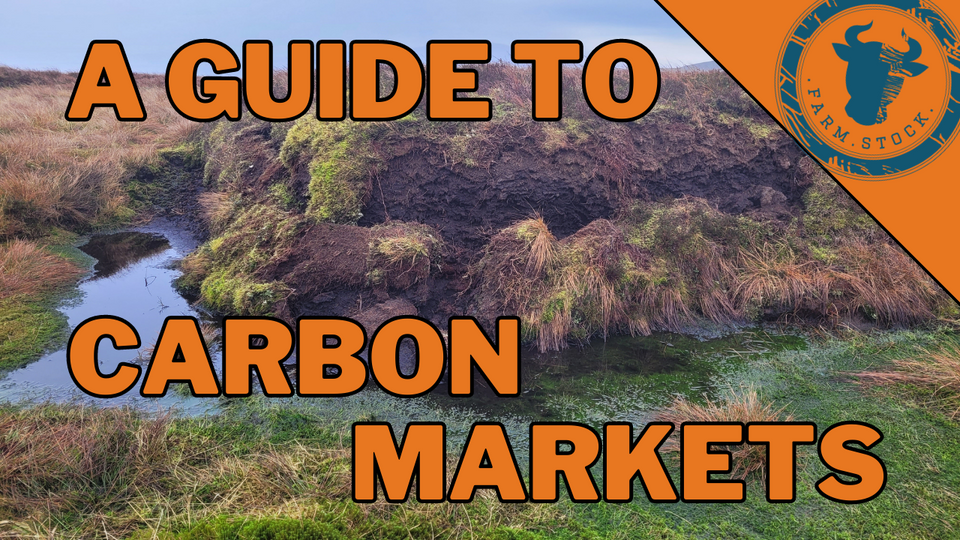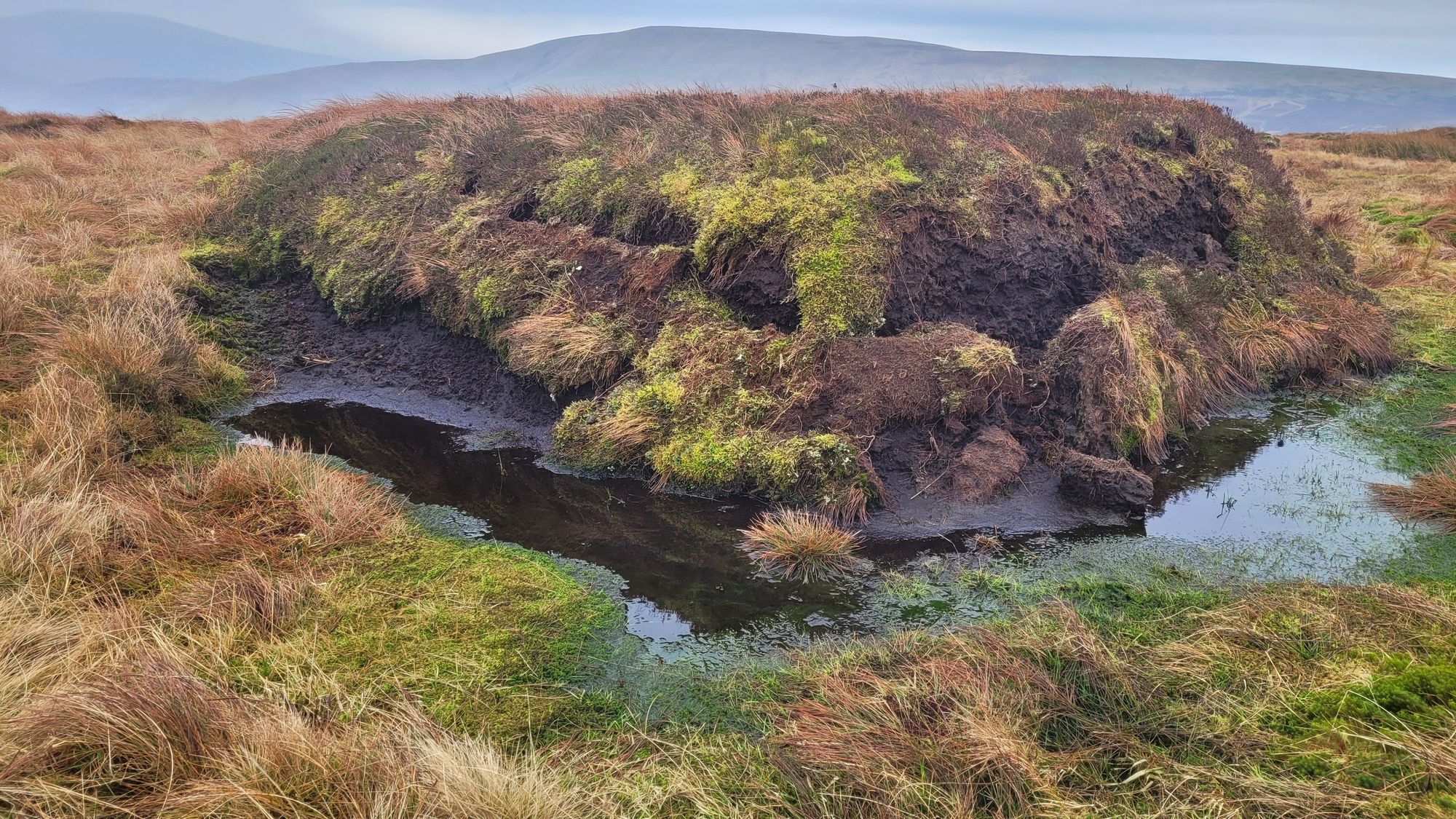A Guide to Carbon Markets

Climate change and achieving net zero is top of the agenda for Government, businesses and individuals across the UK. Key to the UK Government's plans in achieving net zero are the use of carbon markets - allowing companies to offset their 'unavoidable' carbon emissions.
This is a fantastic opportunity for farmers and landowners with the natural assets to sequester carbon. The concept of trading carbon is relatively new so here is the Farm Stock guide to carbon markets.
A short history of carbon markets.....
In 2005, the Kyoto Protocol was entered into force. This was the international treaty that committed state parties to reduce greenhouse gas emissions based on the scientific consensus that global warming was happening and man made emissions were driving it.
This was the precursor to the 2015 Paris climate agreement where respective Governments pledged to keep global warming below 1.5C and achieve net zero - a state of carbon neutrality.
The UK has committed to achieve net zero by 2050.
In order to achieve this they are allowing companies to offset the unavoidable carbon emissions, by creating a financial incentive to cut back - hence creating a demand for carbon credits.
Carbon Trading
- Regulated carbon trading started back in 2005 when the EU set up the first international Emissions Trading Scheme (EU ETS).
- Since leaving the EU in 2020, the UK has established their own trading scheme - the UK ETS.
- Alongside regulated carbon markets, unregulated (voluntary) markets have also emerged.
Regulated markets
The compliance market is a regulated market used by governments and companies that are, by law, required to account for their greenhouse gas emissions. The three main compliance markets are
- Kyoto Protocol - united nations clean development mechanism
- EU emissions trading scheme -this sets a cap on the amount of greenhouse gases that companies can emit each year.
- UK emissions trading scheme - the UK version of the EU scheme but with tighter emissions caps.
Voluntary markets
Voluntary markets have emerged parallel to the regulated ones for the private sector and individuals that want to offset their emissions.
It’s important to note that credits under the voluntary market cannot be used for compliance purposes.
The three main standards for voluntary carbon trading in the UK are:
Buyers in these markets are ‘voluntary’ and include companies or individuals who take it as their responsibility to offset their own emissions generally for corporate social responsibility and/or marketing purposes.

Types of credits that can be sold
Carbon units can be sold as pending insurance units (PIU’s) which is effectively an upfront payment - or a promise to deliver under the WCC, or 'carbon units' which are through time payments (WCU's or PCU's under the woodland and peatland codes respectively).
Calculating land based carbon
Calculating carbon is hard, dependent on a lot of different variables and when it comes to soil in particular is not an exact science.
- For woodland projects: WCC carbon calculator spreadsheet
- For peatland projects use the Carbon emissions calculator
- At the moment no soil carbon code or calculator is available unfortunately although they are working on it.
Bare in mind that there may well be a requirement for land-based businesses to offset their own carbon emissions. So get an idea of the carbon footprint of your own business and keep some credits back to cover this offset.
How to sell?
There are 12000 large companies [basically those with sales over £25m or a balance sheet over £12m] in the UK at present who are required to undertake greenhouse gas monitoring. The UK carbon codes allow them to buy credits to compensate for their carbon emissions.
Once you’ve completed a carbon audit and it’s been verified, you then have to find a buyer. And you can do this in one of 3 ways:
- In England, you can sell carbon units to the government through DEFRA’s woodland carbon guarantee
- You can register projects on the UK land carbon registry
- Use carbon brokers or find private buyers yourself
Price
For the regulated UK ETS market then the price is set by the UK ETS authority. In 2020, the price for carbon was a shade under £48 which has risen to over £52 in 2022 and jumped to a shade over £83 for 2023.
The price for voluntary/unregulated markets is different because nobody (as yet) is forcing these companies to buy carbon credits. So the price here is lower with companies typically paying between £15 - £25 per unit.
Considerations before selling
Here are a few things to keep in mind when looking at selling carbon credits:
- Watch out for greenwashing - basically exaggerating the company's green credentials. It can happen when the company buys carbon offers without first taking steps to offset avoidable emissions and are therefore still major polluters. So understand fully, who it is you are selling to.
- Understand all the implications of trading carbon: this includes tax, land tenure, effects on the capital value of the land, interactions with other environmental schemes etc.
- Record keeping - be really on it when it comes to record keeping and keeping track of credits you have left to sell to avoid double counting such as in a landlord/tenant situation.
- Have a contingency plan - contacts in carbon trading are long terms (generally 30 years plus) so keep a credit buffer in the case of a forest fire or similar that could damage the contract in place.
It’s fairly probable that supermarkets will want their supply chains to be low carbon. So if you’ve sold off all your credits to someone else then they won’t be able to use the ‘sold sequestered’ on their packaging etc.
So what next?
The advice to farmers and landowners is very firm - don’t sell anything yet! And there is good reason for this.
- The voluntary markets are still unregulated. There is no baseline on which the market operates meaning there's room for a lot of error on both the buying and selling sides.
- The Prices are going to rise - the demand for credits is only going to increase as we get closer to the net zero date in 2050. It’s simple supply and demand economics.
- Cover your own emission first - It is most probably that land based businesses will be required to account and cover their own carbon emissions first so please make sure you have enough credits to cover this. Agriculture is one of the big carbon polluters so no doubt it will be in the cross hairs when it comes to net zero.
